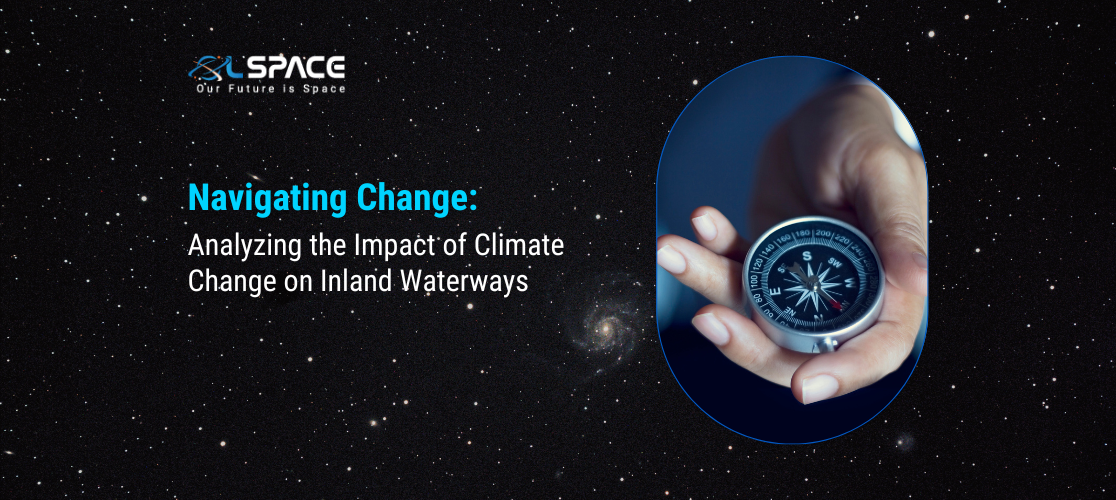22 December 2023
Navigating Change: Analysing the Impact of Climate Change on Inland Waterways

Climate change is ushering in a new era of environmental challenges, and one area profoundly affected is the network of inland waterways. As global temperatures rise and weather patterns become more unpredictable, the impact on rivers, lakes, and canals is significant. This article delves into the complex dynamics of climate change and its consequences on inland waterways, exploring the environmental, economic, and social implications of this evolving scenario.
1. Altered Hydrological Patterns:
Shifts in Precipitation: Climate change leads to altered precipitation patterns, impacting the volume and timing of water flow in inland waterways.
Increased Flooding and Droughts: Extreme weather events, including intensified floods and prolonged droughts, pose challenges to the stability and navigability of water routes.
2. Water Quality Challenges:
Temperature Fluctuations: Rising temperatures affect water temperatures, potentially impacting aquatic ecosystems and the health of fish species.
Altered Nutrient Levels: Changes in precipitation patterns can influence nutrient runoff, affecting water quality and contributing to issues like algal blooms.
3. Sea Level Rise and Salinity Intrusion:
Backflow Effects: Rising sea levels contribute to saltwater intrusion, affecting the salinity levels in estuarine and coastal inland waterways.
Ecosystem Disruption: Increased salinity can harm freshwater ecosystems, jeopardising the habitats of native species and impacting water supply for agriculture and communities.
4. Infrastructure Vulnerability:
Erosion and Sedimentation: Altered hydrological patterns can lead to increased erosion along riverbanks and sedimentation in waterways, affecting the infrastructure integrity of bridges and locks.
Impact on Navigation Channels: Changes in water levels and sedimentation can impede navigation, requiring constant monitoring and adaptation of navigation channels.
5. Economic Implications for Transport:
Disruptions to Shipping Routes: Inland waterway transport, a critical component of many economies, may face disruptions due to changes in water levels and infrastructure damage.
Increased Maintenance Costs: Maintaining navigability in the face of climate-induced challenges may lead to higher costs for dredging, repairs, and infrastructure upgrades.
6. Impact on Agriculture and Water Supply:
Altered Water Availability: Changes in precipitation patterns and increased evaporation can impact water availability for agricultural irrigation and municipal water supply.
Challenges for Irrigation Systems: Salinity intrusion can affect the suitability of water for irrigation, potentially impacting crop yields and soil health.
7. Biodiversity Loss and Habitat Changes:
Shifts in Ecosystems: Climate-induced changes may alter the distribution of plant and animal species, leading to shifts in ecosystems along inland waterways.
Impact on Migratory Species: Changes in water temperature and flow patterns can affect the migratory routes and breeding habitats of fish species.
8. Community Resilience and Adaptation:
Vulnerability of Riparian Communities: Communities relying on inland waterways for livelihoods, fishing, and cultural practices may face increased vulnerability to climate-related disruptions.
Adaptation Strategies: Developing adaptive strategies, such as resilient infrastructure and diversified livelihoods, becomes crucial for communities dependent on these waterways.
9. Regulatory and Policy Considerations:
Integrated Water Management: Policymakers must consider integrated water management approaches that account for the interconnected nature of climate change impacts on inland waterways.
Adaptive Governance: Regulatory frameworks should be adaptive, allowing for the incorporation of new data and strategies as climate change effects unfold.
10. International Collaboration for Sustainable Water Management:
Shared Water Resources: Inland waterways often traverse multiple countries, necessitating international collaboration for sustainable management and addressing transboundary challenges.
Climate Change Mitigation: Collaborative efforts should extend to addressing root causes of climate change, advocating for global initiatives to mitigate greenhouse gas emissions.
Conclusion: Charting a Resilient Course
The impact of climate change on inland waterways is a multifaceted challenge that requires a comprehensive and collaborative response. As we navigate this evolving landscape, it is imperative to invest in sustainable practices, resilient infrastructure, and adaptive governance. By understanding the intricate web of environmental, economic, and social factors at play, stakeholders can work together to chart a course toward a more resilient future for the vital network of inland waterways
